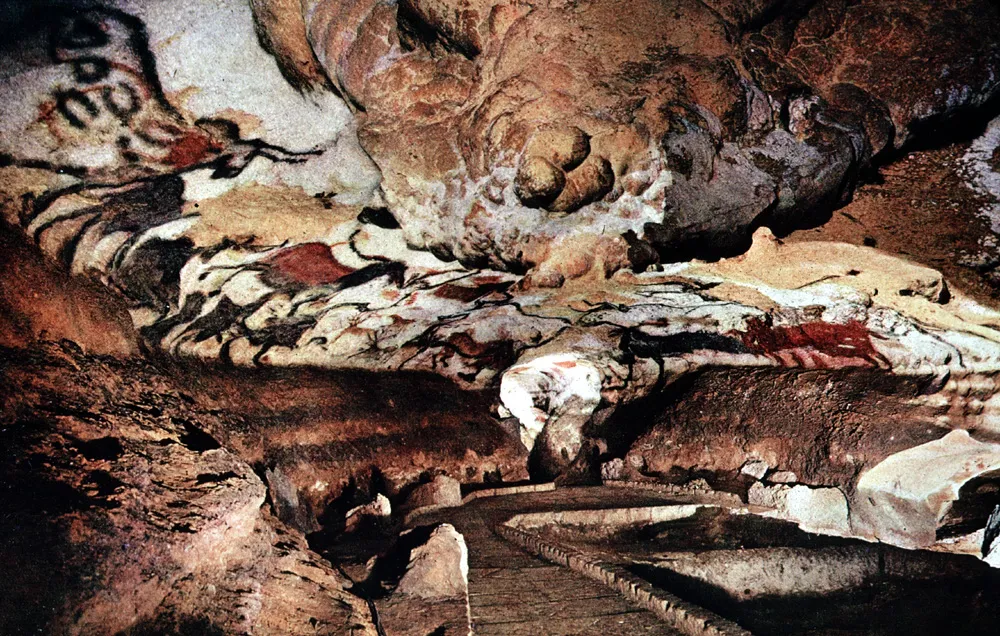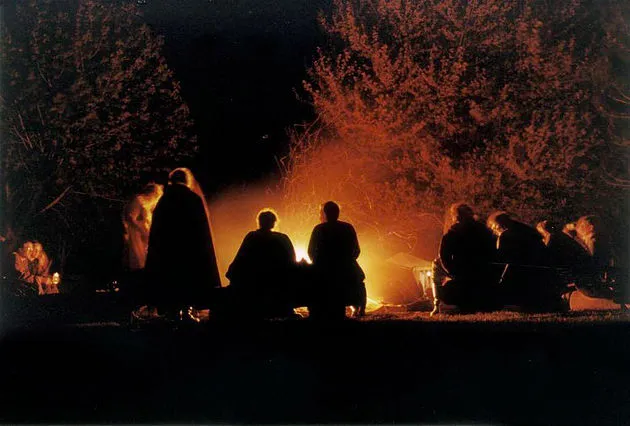Distributed Media's Ancient Origins

This article originally appeared on the ARA Medium channel.
How A Two-Million Year Old Event Helped Us Build the Future
As 2019’s ongoing streaming media wars continue to heat up, technologists peering around the corner are beginning to see the distinct advantages in decentralizing and distributing our media workflows. The rise of AT&T’s WarnerMedia and Oath’s transformation into Verizon Media signal that the world of content creation is already undergoing a significant shift in distribution practices.
As a result, we are now entering a time where content is no longer merely king. Content has become the soil under our feet, the air we breathe, and the water we drink. It ceases to serve as a mere authority in the world — it is now the authority of the world — and any person, group, or brand who wishes to reach its target audience must participate by means of content creation.
Today, content creation is embraced by more people than ever before. That’s why at Ara, we’re building out the distributed content network that will benefit all content creators, both new and seasoned, by removing third parties, reducing hosting costs, and providing a powerful new way to reward participation in content delivery.
The Inevitability of Decentralization & Distribution
Early on, we saw that distributed digital content networks would be the wave of the future, and today, we see their coming decentralization as an inevitability.
History has shown us that popular media tends to undergo two transitions as it evolves from a new art into a ubiquitous aspect to everyday life: first, it decentralizes from its initial authority; then, it becomes distributed. Once a media is distributed, the lines start to blur between producer and consumer. The evolution of video entertainment provides ample evidence in favor of this observation.
After spending decades centralized around the movie theater chains, video entertainment began to decentralize in the late 1940s, thanks to the development of new technology that made video easier to capture, edit, and distribute. The television industry formed around these new innovations, and as a result, video’s customer base expanded significantly, dethroning the movie theater chains as the central authority in video. By 1952, there were 20 million television sets installed in homes throughout the United States, vastly exceeding the number of movie theaters.
Of course, after cable TV had its go at expanding the industry even further, the internet continued video’s decentralization. New entrants like Netflix, YouTube and Twitch have brought both the cinema and broadcast TV alike into our homes, leading to today’s unquestionable arrival of distributed video. However, anyone who’s read the news lately would likely agree: our ambitions in distributed media far outpace society’s readiness for it.
That is why the future will run on the infrastructure we build out today, otherwise we’ll struggle to meet our newfound content needs in a few short years. At Ara we’ve been hard at work designing a distributed framework specifically addressing content delivery. Throughout this process, we’ve found ourselves taking inspiration from some rather unlikely sources — among them, the discovery of fire. The reasons for fire’s timeless prevalence throughout human history serves as an ample springboard for figuring out how to encourage and reward participation in a future dominated by distributed media.
Fire: The Ultimate First-Mover Advantage

Nearly two million years ago, some nameless genius made history by building the world’s very first campfire. That individual could have never dreamed of what they were making possible with this one act of brilliance. The discovery of fire did much more than help us cook our food, produce light amidst the darkness, and protect us from predators. Fire opened up the very first creative possibilities for all human beings, giving us a means to achieve brilliance in nearly every aspect of culture.
Think about it: before we could huddle into small tribes, feeling sheltered and safe under the watchful eye of a roaring flame, how were we to ever come up with such relatively frivolous ideas as singing, storytelling, and dancing? Without the ability to control light, who would ever bother trying to draw, paint, or write?
Mark Zuckerberg, Steve Jobs, and even Gutenberg all cower under the awesomely epic shadow cast by that one anonymous hero, who dragged all of our ancestors out of the caves and into the Netflix-equipped self-driving electric cars in which we find ourselves today.
Even though fire has proved itself to be overwhelmingly valuable, no one central authority has ever controlled fire. In this sense, the control of fire was humanity’s very first form of distributed media, and the campfire is its earliest and most enduring implementation. By merely providing light and heat, campfires generate community, participation, trust and safety — precisely the same qualities that underpin successful distributed content networks.
Community

Gathering around the fire with friends and family is most certainly one of life’s basic pleasures. This is because for millennia, humans have relied on their communities to survive and thrive, and fire has always played an essential role within those communities. Reliance upon fire goes well beyond the obvious benefits of warmth, light, and protection — without it, early societies would have had a much harder time developing their cultural arts, traditions, and values.
Community provides a fertile audience for the expression of ideas, the capability for individual specialization, and the pride gained through participating in something bigger than oneself. Successful distributed media protocols such as BitTorrent have always relied upon an active and welcoming community to maintain their dominance. Those communities came about by both projects’ decisions to open source their code, which enabled them to be available on nearly every platform imaginable, supported by every operating system, and implementable in all sorts of other useful projects. This in turn has led to innovations such as WebTorrent, breathing new life into this already outstanding web protocol.
Ara has followed in these projects’ footsteps by being an open source product from day one. But there are many ways where we can, and should improve upon today’s state of affairs. Ara uniquely fosters community around digital content by rewarding users for helping to distribute the movies, shows, music, and games that they’ve purchased. Unlike the users of BitTorrent or Bitcoin, users of Ara know that every time they receive a reward for sharing with their peers, they’ve just helped their favorite content creators achieve success, too.
Participation

While gathering around the fire is a great way to foster community, without modes of participation, individuals will begin to fall out from that community rather quickly. Consider how one must participate in keeping a campfire continually lit, by adding more kindling and stoking the flame. Since nobody can gather kindling and light a fire at the same time, specialization and division of labor quickly emerged into the human consciousness. As a result, people take on individual responsibilities, both to the fire and to the activities surrounding it.
Without avenues for individualized participation, communities stagnate and break apart. That’s why Ara has prioritized enabling participation from as many different parties as possible, without sacrificing ease of use. Creators, publishers, businesses, and fans all play a key role in enabling success, and one’s technical know-how should not limit one’s ability to participate.
Creators regain control over their content, deciding for themselves how they’d like to package, prepare, and deliver it to fans. Our free, open source Ara File Manager allows anyone to become a content creator, and under whatever terms they’d like!
Publishers leverage finer-grained control over content licensing and DRM, enabling innovative new approaches to digital licensing and distribution.
Businesses are able to integrate Ara’s technology to power their content delivery, significantly reducing costs for the entire digital content ecosystem.
Fans enjoy the opportunity to be able to truly “vote with their dollars” again and contribute in a positive way to their favorite artists’ careers, without having to sit through any advertisements or have their usage tracked.
Trust and Safety
Early humans used their control over fire to protect themselves from dangerous predators, other hostile tribes of humans, and from the natural elements. The illuminating flame helped quickly identify newcomers during nighttime, providing a reliable means for quickly establishing trust.
A distributed framework flourishes based upon its ability to gain trust among both current participants and potential new entrants. At Ara, we leverage blockchain technology to ensure objective, unquestionable transaction records, which can be publicly verified by anybody. What better way to check whether your favorite filmmaker received your payment for their latest movie?
Without powerful safety mechanisms and an in-built system of trust, distributed media just feels a whole lot riskier. That’s why we built Ara Identity, which offers a powerful, foolproof way to ensure the validity and identity of peers. This not only helps to harden our network against potential security vulnerabilities — it also eliminates the chances for identity theft, payment scamming, and other fraud which has plagued online commerce from the get-go.
Ara’s outstanding encryption implementation means your content purchasing records are incredibly safe. We leverage the same encryption technology as the Snowden-approved Signal messaging app. Since all our encryption technology was built into the protocol from the very start, users will not need to learn any new security tricks or jump through any new hoops just to be protected. That’s a win for all parties involved, without a doubt.
Innovation Through Tradition
Sometimes, we are able to make extraordinary things happen by paying attention to the successes of the past. Even though today’s world feels seemingly detached from the campfires of our ancestors, much of what we know and trust about the world came about through their use. By applying the campfire’s virtues to the exciting new developments in distributed media, we have instilled sanity, reliability, and innovation all into one simple protocol.
Though we may never obtain the ubiquity of fire, Ara is blazing an exciting new trail in content networks, and we invite each and every one of you to join us on our journey. Visit https://ara.one to learn more.